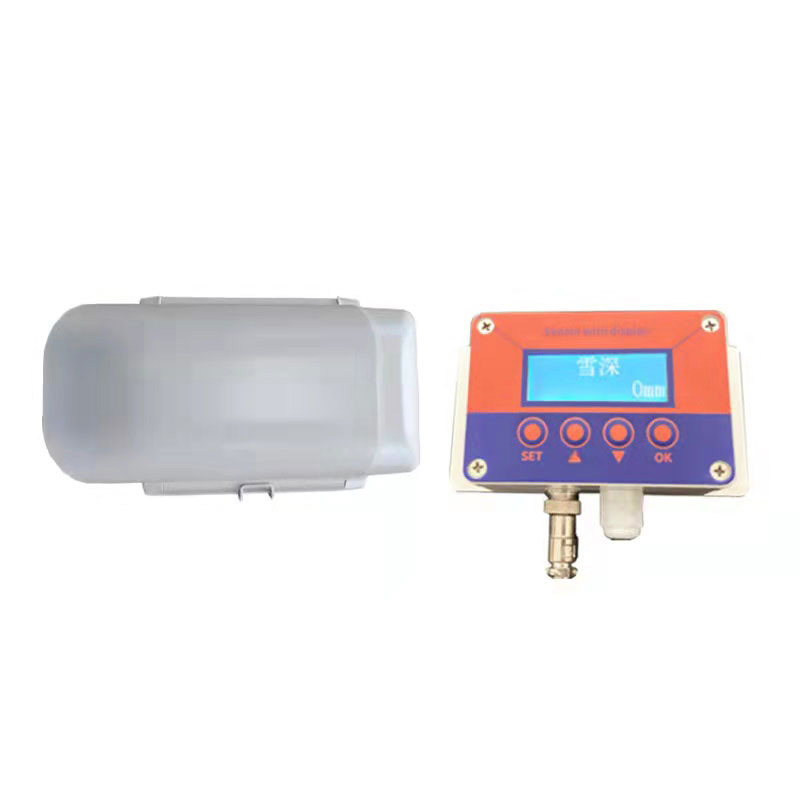Tianqiong Sensor IOT Technology Co., Ltd
Sales Manager:Ms. Emily Wang
Cel,Whatsapp,Wechat:+86 15898932201
Email:info@fengtutec.com
Add:No. 155 Optoelectronic Industry Accelerator, Gaoxin District, Weifang, Shandong, China

Sales Manager:Ms. Emily Wang
Cel,Whatsapp,Wechat:+86 15898932201
Email:info@fengtutec.com
Add:No. 155 Optoelectronic Industry Accelerator, Gaoxin District, Weifang, Shandong, China

Model:FT-JX1
Brand:tianqiong
1.Overview of Snow level sensor
Snow level sensor is an intelligent snow sensor that uses laser telemetry technology to automatically and continuously monitor snow depth.Water is the foundation of the existence of various creatures on the earth.The changes and movement of water have created our world today.Snowfall is an important part of the water cycle.Snowfall has a certain impact on the balanced development of the ecological environment and people's lives and production.
The automatic snow depth monitoring station is a professional equipment for real-time monitoring of snowfall information based on years of experience in manufacturing meteorological and environmental instruments.The equipment uses laser recognition and measurement technology to overcome the shortcomings of ultrasonic waves, electromagnetic waves, weight and other types of sensors that cannot recognize snow, thereby achieving extremely high detection accuracy.By monitoring the distance at the location, the thickness of the snow is obtained and the snowfall per unit time is analyzed.This device can be an independent automatic snow depth monitoring alarm system, or it can be networked to form a diversified network monitoring.
Application scope: Widely used in many fields such as meteorological stations, port terminal safety monitoring, road traffic safety monitoring, aviation monitoring, building safety monitoring, agricultural production monitoring, hydrology and water conservancy.
2.Snow level sensor laser ranging principle
The snow depth sensor uses the principle of a phase laser rangefinder to measure the depth of snow.The phase is the frequency of the radio band, which uses the amplitude modulation of the laser beam and determines the phase delay generated by the modulated light to travel to the measurement line once, and then converts the distance represented by this phase delay according to the wavelength of the modulated light.That is, the time required for light to pass through the round-trip measurement line is determined by indirect method, thereby solving the depth of snow.
3.Snow level sensor technical parameters
| powered by | DC12-15V | |
| Measurement range | 0.05~3m | |
| Measurement accuracy (standard deviation) | ±1.0mm | |
| Signal output | RS485 | |
| Distance unit | m | |
| Laser Type | 620~690nm | |
| Laser grade | Level II, <1mW | |
| Spot diameter at distance m | 6mm@10m, 30mm@50m | |
| Single measurement time | 0.05~1s | |
| Protection level | IP65 | |
| Operating temperature | -40~+50℃ | |
| Storage temperature | -20~+80℃ | |
| weight | ||
| Dimensions (Length × Width × Height) | ||
| Implementation standards | GB/T 14267-2009 | |
| Power consumption | standard | 0.9W |
| heating | 14W | |
| Heating method | Automatic temperature control | |
Remark:
For different measurement targets and measurement environments, due to the excessive ambient light intensity, excessive ambient temperature, excessive weak or strong target reflection, or uneven target surface, the measurement range may be shortened or large errors may occur to the measurement results.
How it works:
Measurement method:
After first installing or moving the installation position, you need to adjust the zeroing.Press "SET" for 5 seconds to complete the zeroing.
The working principle of the sensor: data is collected once in 10 minutes if there is snow (snow depth is greater than 10mm) and data is collected once in 30 minutes if there is snow.
Intra-cavity heating time: When the temperature in the cavity is lower than 0 degrees, turn on the heating mode and heat it for 5 minutes each time.
Micrometeorology is an important branch of meteorology that studies the physical processes and phenomena in the near-surface atmosphere, typically within a range of a few meters to tens of meters above the Earth's surface. Unlike traditional meteorology that focuses on large-scale weather patter...
Miniature automatic water quality monitoring station is a one-stop online water quality monitoring system compliant with national standards, capable of periodic or continuous monitoring of parameters such as temperature, pH, dissolved oxygen, COD, and ammonia nitrogen. Based on optical and electrochemical principles, it achieves automatic water sampling and distribution, pre-treatment, data monitoring, and remote transmission. It is suitable for environmental protection, water conservancy, and other water bodies requiring high-density, low-cost, and high-frequency monitoring....
With the acceleration of urbanization and industrialization, regional and complex air pollution problems have become increasingly prominent. Traditional ambient air quality monitoring networks typically consist of a limited number of well-equipped national or provincial control stations. While these...
Meteorology encompasses a wide range of elements, such as rain, ice, wind, frost, clouds, and temperature, among others. In the power system, "micro-meteorology" is different from what is described in meteorology. Power micro-meteorology refers to the meteorological conditions in a small s...